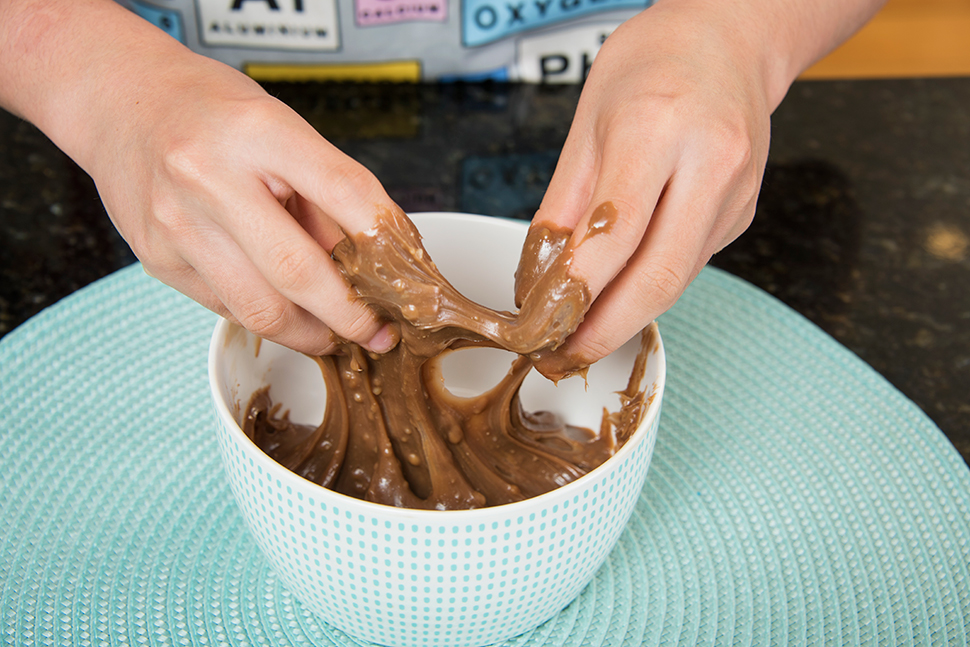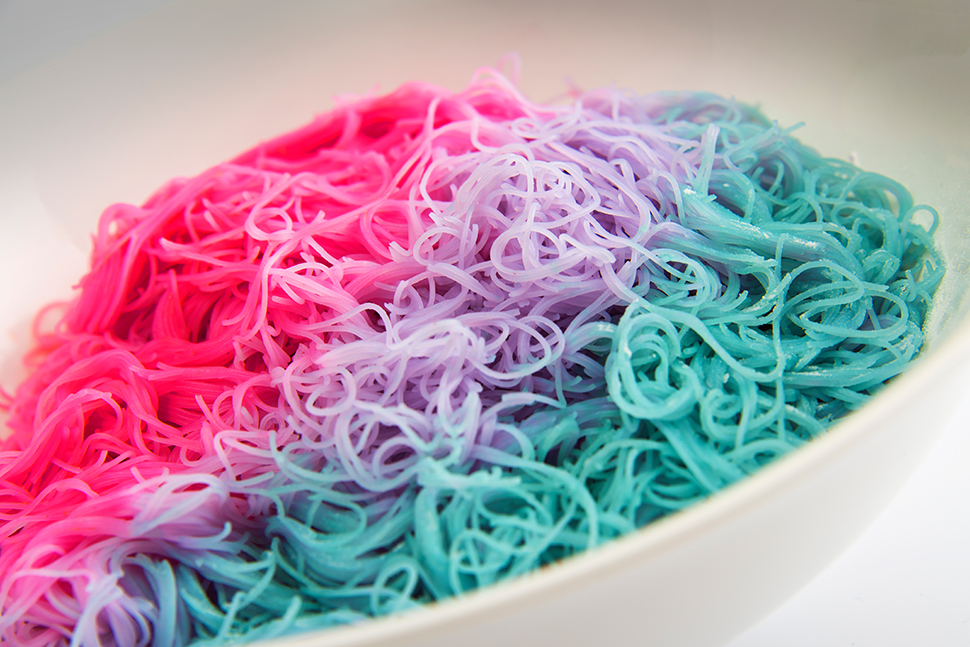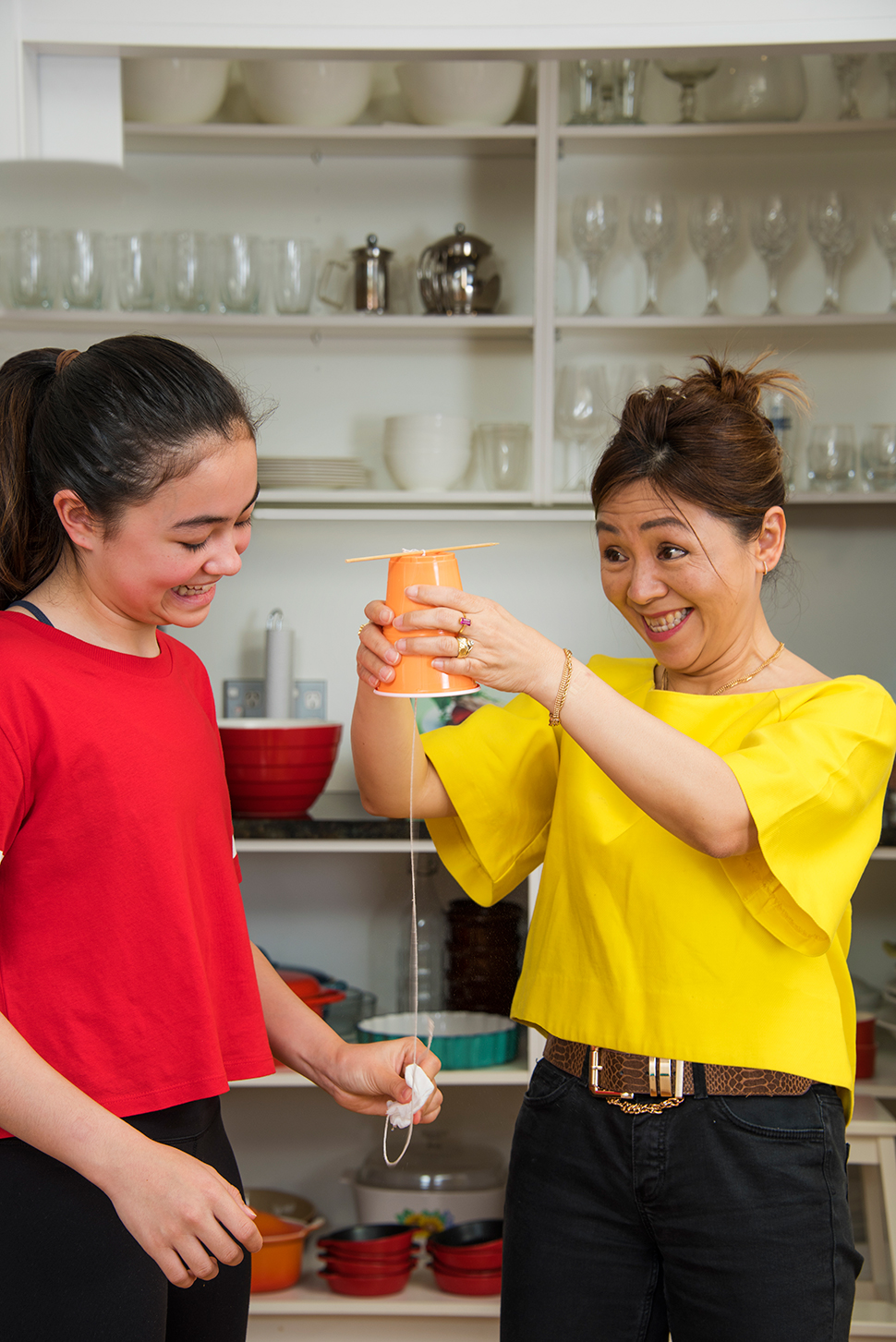- Home |
- Search Results |
- Do try this at home: mind-blowing science experiments you can do in your kitchen
Do try this at home: mind-blowing science experiments you can do in your kitchen
The Kitchen Science Cookbook is a beautifully crafted recipe book with a unique twist: each recipe is a science experiment that you can do at home, using the everyday ingredients you'll find in your kitchen. No need to be a science expert – these easy-to-follow recipes make mind-blowing science experiments fun for everyone.
Scrumptious Slime – 45 minutes (plus 2 hours cooling time)
This slime flows like a liquid but can be rolled like a solid – and the best part is that it’s edible!

Equipment & ingredients:
- Saucepan
- Plastic sandwich bag
- 395g (14oz) can sweetened condensed milk
- 10g (1 tbsp) cornflour/cornstarch
- 45ml (3 tbsp) chocolate syrup
Instructions:
1. Pour the milk into the saucepan and heat on a low heat.
2. Slowly stir the cornflour into the warm milk. Continue heating and stirring over a low heat for 20mins or until the mixture thickens.
3. Remove from the heat and stir in the chocolate syrup.
4. Place in a sandwich bag and refrigerate.
5. Once cold, roll and squeeze into any slimy shape you want – and watch it flow!
The science behind Scrumptious Slime
Cornflour or cornstarch is a starch made up of long chains of sugar molecules called glucose which are joined together in a coiled up ball. When exposed to heat and milk, the starch particles absorb water from the milk, causing them to swell. These swollen particles start to press up against each other. This reduces the movement of the liquid, resulting in it thickening or becoming viscous. Eventually the starch particles burst, freeing up the long strands of starch which well further and absorb the fluid outside the particles. This traps the remaining water in the mixture and turns it into a highly viscous gel or slime. This slime flows like a thick liquid but can be rolled around like a soft solid. The advantage of this recipe is that the slime is edible once you have finished with it
Unicorn Noodles – 30 minutes
These amazing and edible unicorn noodles can transform from purple to blue or pink right in front of your eyes!

Equipment & ingredients
- Large saucepan
- Knife
- Stove
- Large heatproof bowl
- Sieve or colander
- Red cabbage
- Lemon
- Clear noodles (vermicelli or glass noodles work well)
- Hot water
Instructions
1. Roughly chop the purple cabbage leaves and place in the saucepan.
2. Add enough water to the saucepan to half cover the cabbage leaves.
3. Bring to the boil and cook for 5 minutes on the stove.
4. Place a colander over a large heatproof bowl and strain the hot cabbage.
5. Put the cabbage aside – if you like, you can add a pinch of salt and a dash of vinegar to make it into a tasty side dish!
6. Pour the cabbage juice back into the pan and add the noodles.
7. Simmer for 5-10 minutes, until the noodles are soft and purple.
8. Use the colander to drain off the water and transfer the noodles to a plate or bowl.
9. Squeeze fresh lemon juice onto the noodles and watch them turn pink!
The science behind Unicorn Noodles
Purple cabbage is purple due to a pigment called anthocyanin. This same pigment is also found in blueberries. As the cabbage boils, the anthocyanin leaches out into the water. When the dehydrated noodles are added to the cabbage water the anthocyanin is absorbed.
Scientists use a scale called the pH Scale to describe the concentration of hydrogen protons in a solution. With 7 being neutral, a pH of less than 7 means the solution is acidic whilst a pH of greater than 7 means the solution is alkaline. Anthocyanin changes colour depending on the pH of the solution it is exposed to. When it is neutral (or at a pH 7) it is purple, but if it comes into contact with something acidic such as lemon juice, it turns pink. An alkaline solution, on the other hand, would make the anthocyanin turn blue, green or even yellow. In addition to being a tasty snack, the unicorn noodles are also an edible pH meter!
Chicken in a Cup – 20 minutes
Pretend that there is a chicken in the room with this funny and easy-to-make instrument that sounds like a chicken in a cup.

Equipment & ingredients
- Plastic drinking cup
- 40cm (16in) wool, yarn or cotton string
- Wooden skewer
- Paper towel
- Scissors
- Water
Instructions
1. Carefully punch a hole in the centre of the bottom of the cup, large enough for the string to fit through.
2. Tie one end of the string to the middle of the skewer.
3. Push the other end of the string through the hole from the outside of the cup and pull it through the centre of the cup.
4. Fold a paper towel into quarters, then dip it into the water and squeeze out any excess.
5. Holding the cup firmly in one hand, wrap the damp paper towel around the string, close to the mouth of the cup.
6. Squeeze the string with the paper towel and pull down, using short jerks, so that the paper towel slides down the string.
7. Listen carefully and each jerk motion should sound like the cluck of a chicken.
The science behind Chicken in a Cup
The sounds that we hear with our ears are created by sound waves. Sounds waves are vibrations in the air. When the wet tissue is pulled across the string, the friction – or sliding force of the movement – creates vibrations. These vibrations on the string are too small for our ears to pick up so usually we are unable to hear them. The cup picks up the vibrations and amplifies them, making them loud enough to be detected by the hairs in our ears, and so allowing us to hear the sound.
This theory of amplification is also used by instruments such as pianos and guitars which are made from wood. The wood acts as a sounding board which makes the instrument louder.